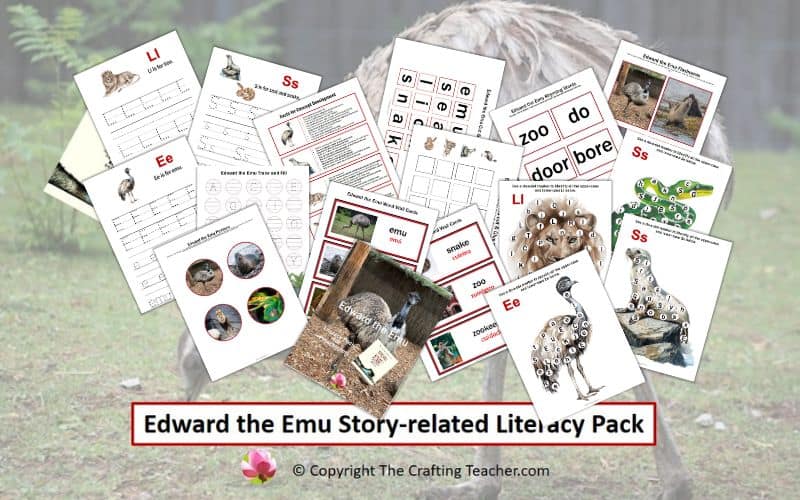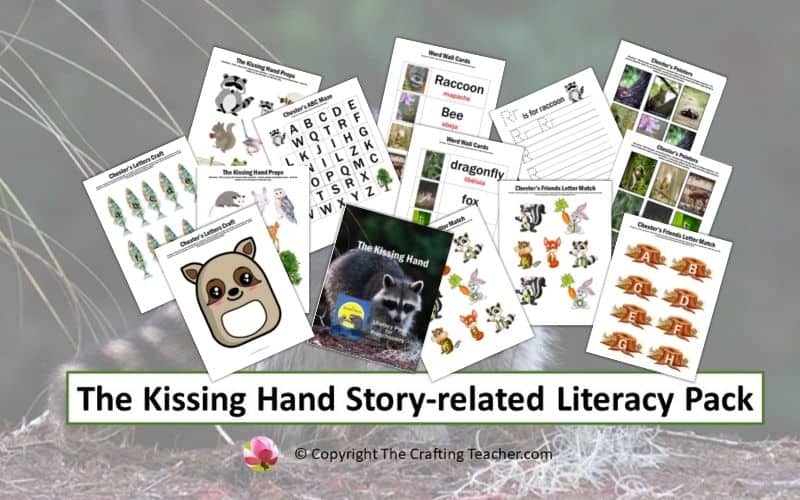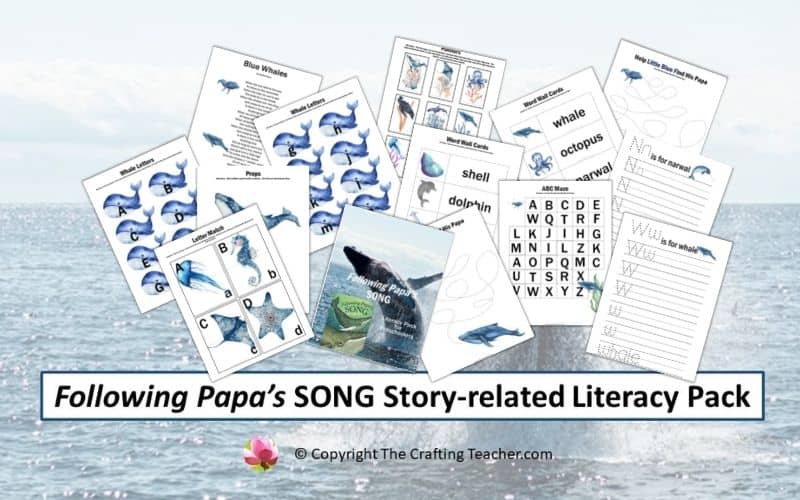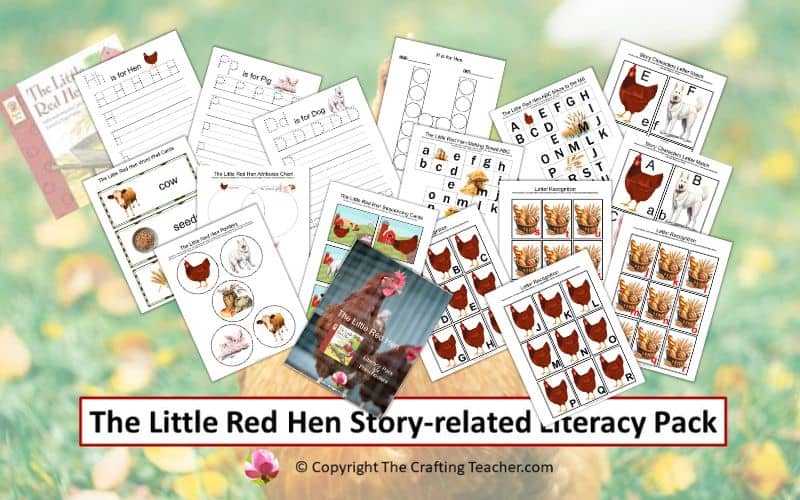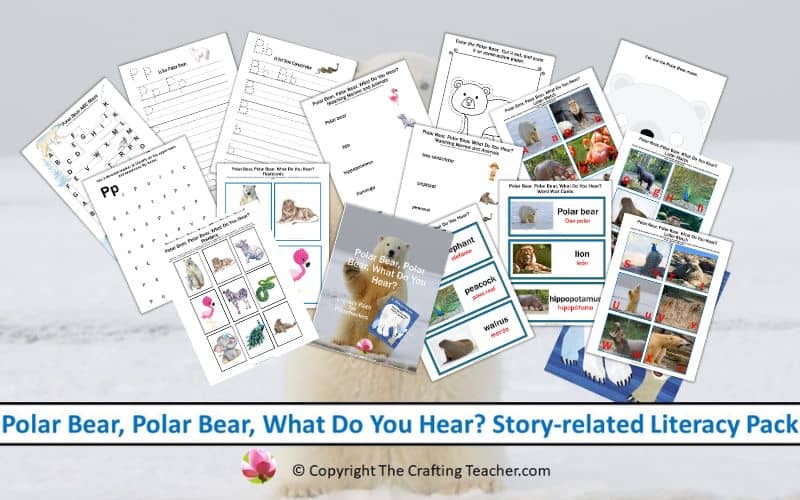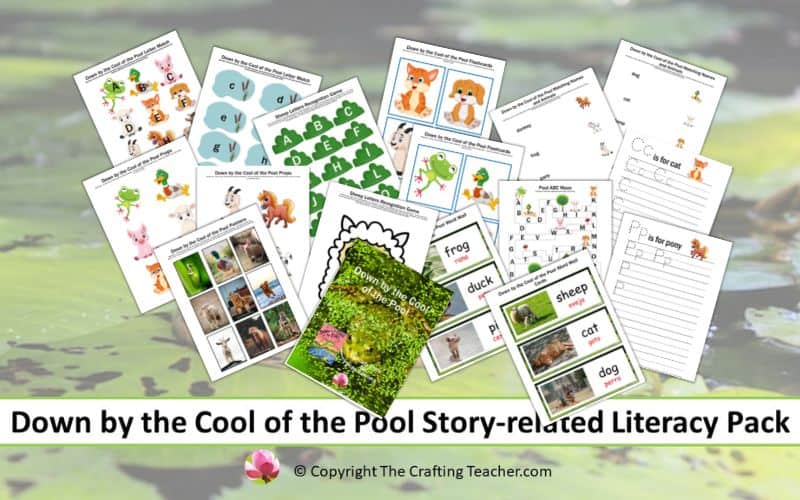Edward the Emu Story-related Literacy Pack for Preschoolers
Affiliate Disclosure: “This post contains affiliate links, which means I receive a small commission, at no extra cost to you, if you make a purchase using those links.”
This FREE 24-page Edward the Emu Story-related Literacy pack is the perfect book companion for this story, one of my favorites.
Edward the Emu, written by Sheena Knowles, is the story of Edward, an emu who lives in a zoo and, tired of his life, decides to try being something else for a change. He tries swimming with the seals, spending a day lounging with the lions, and even slithers with the snakes. But Edward soon discovers that being an emu may be the best thing.
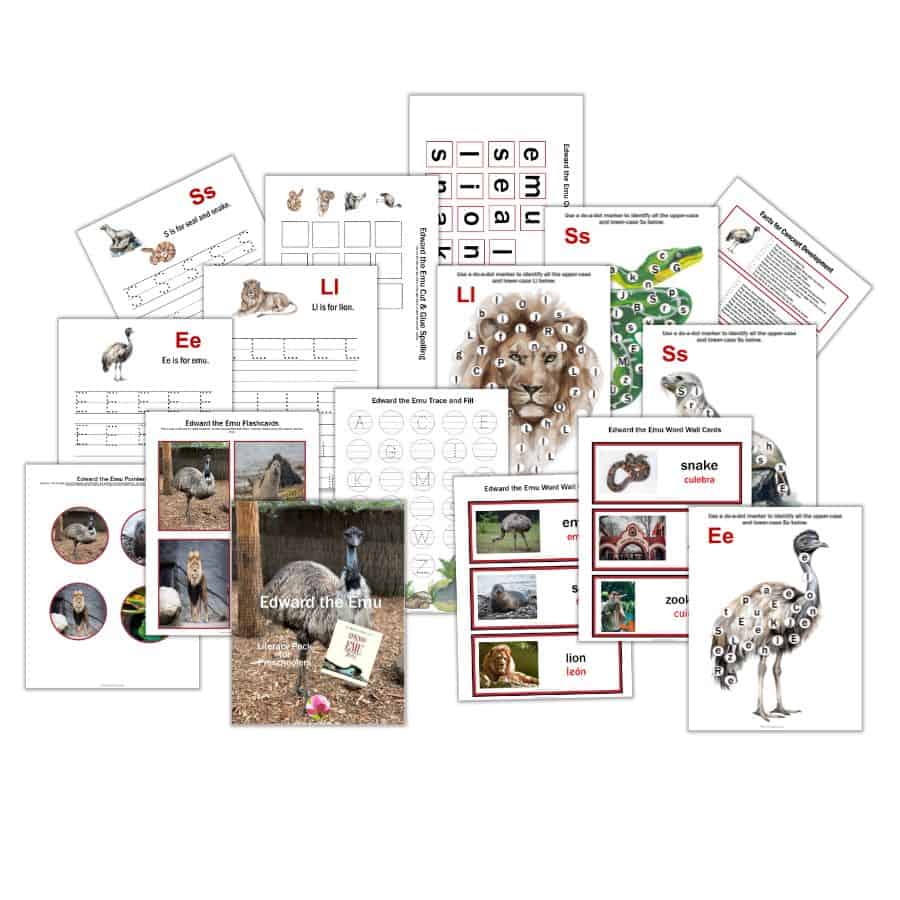
This Edward the Emu literacy pack includes nine activity sets to accompany this book, which you can download at the end of this post.
Edward the Emu Pointers
To introduce this story, start by showing them the pictures in the book without reading.
Before reading, review the parts of the book: cover, title, author, illustrator, spine, and back. Show them the cover and ask them what type of animal it is. If the children are interested and start commenting, use the opportunity to talk about emus.
During and after reading, ask open-ended questions that tie the students’ life experiences and can have multiple answers, using who, what, where, and when, such as:
- What type of animal is this?
- Why do you think Edward was bored?
- Which of these animals is your favorite? Why?
- What is the job of a zookeeper?
- Do you know what type of animal this is?
Use the pointers provided in the pack to mark the words as you read. This is an easy and very efficient way to show preschoolers that you read from left to right and top to bottom and that words have meaning.
To prepare the pointers, print them on white cardstock, laminate them, and glue them to a tongue depressor for easier use.
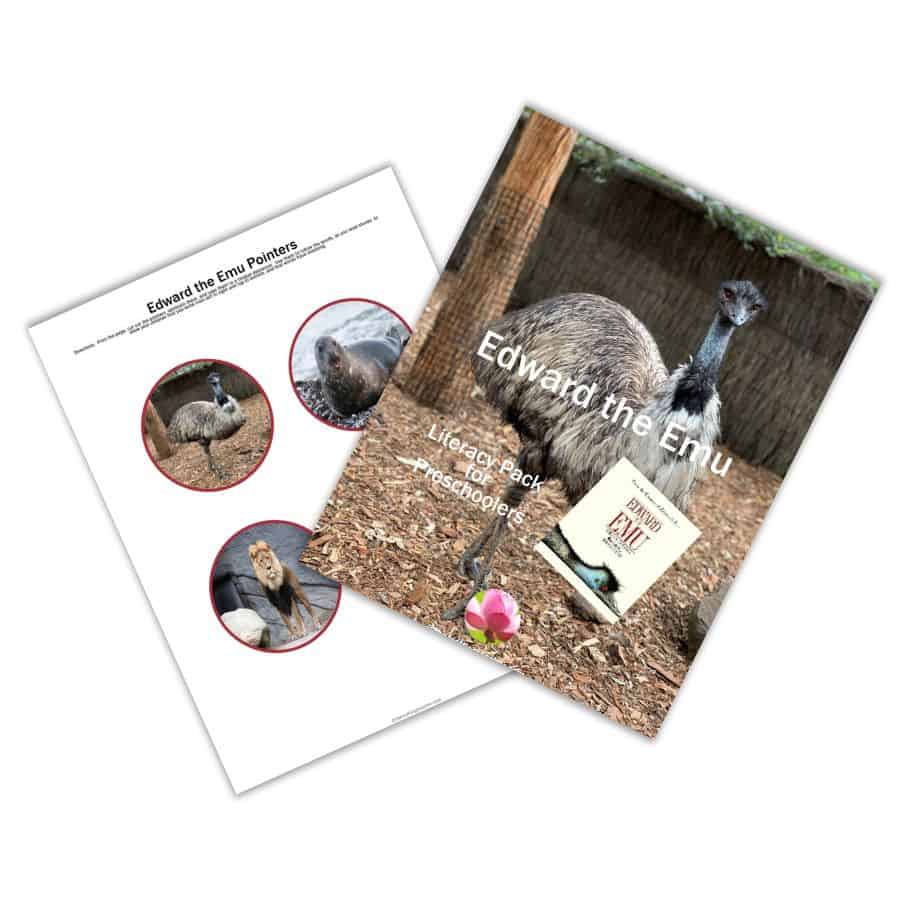
Retelling the Story
Retelling stories helps preschoolers build the foundation for reading and writing, practice event sequencing, and identify a story’s main characters and events. It is also crucial for developing essential skills such as language development, vocabulary, story comprehension, memory, and listening skills.
Print several copies of the flashcards provided in this Edward the Emu literacy pack using white cardstock. Cut them out and laminate them. Distribute the story props among the students and encourage them to retell the story using their props. When the activity is complete, place the props and the book in the Listening or Library Center to invite the children to retell the story independently.
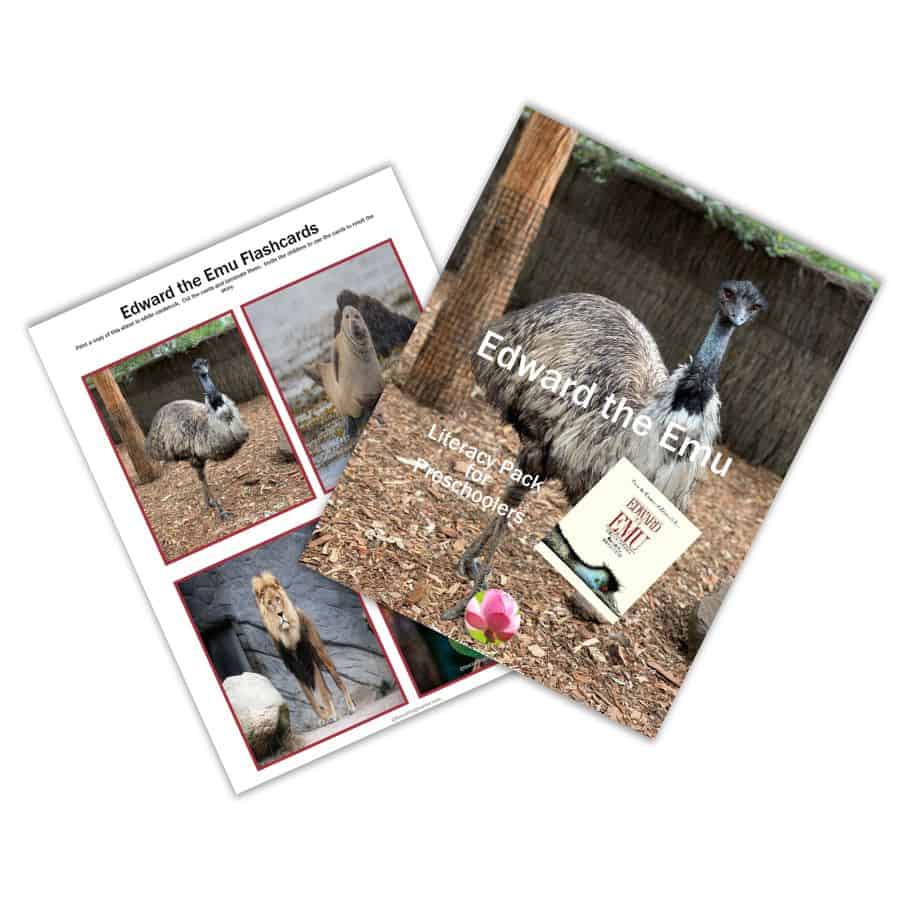
Word Wall Cards
The ability to recognize words lays the foundation for literacy development in preschoolers. It improves their vocabulary and reading comprehension, as well as boosts their confidence and motivation to learn.
Print the words provided in this Edward the Emu literacy pack using white cardstock, laminate them to make them last longer, and use them multiple times. Add them to your word wall and different centers. Encourage your children to use each word in a short sentence, and talk about the animals in each. You can also use them to invite your preschoolers to compare the animals.
Remind your students that words are made up of individual letters. You can do several activities using your word wall cards. For example:
- Clap the syllables on each word.
- Say the beginning sound of each word.
- Spell some words.
- Say the name and sound of the first letter of each word.
- Find other words that start with the same beginning letter.
- Identify words that start with the same beginning sound.
- Copy the words with pencil, crayon, or marker.
- Match each letter and word with magnetic, wooden, or foam letters.
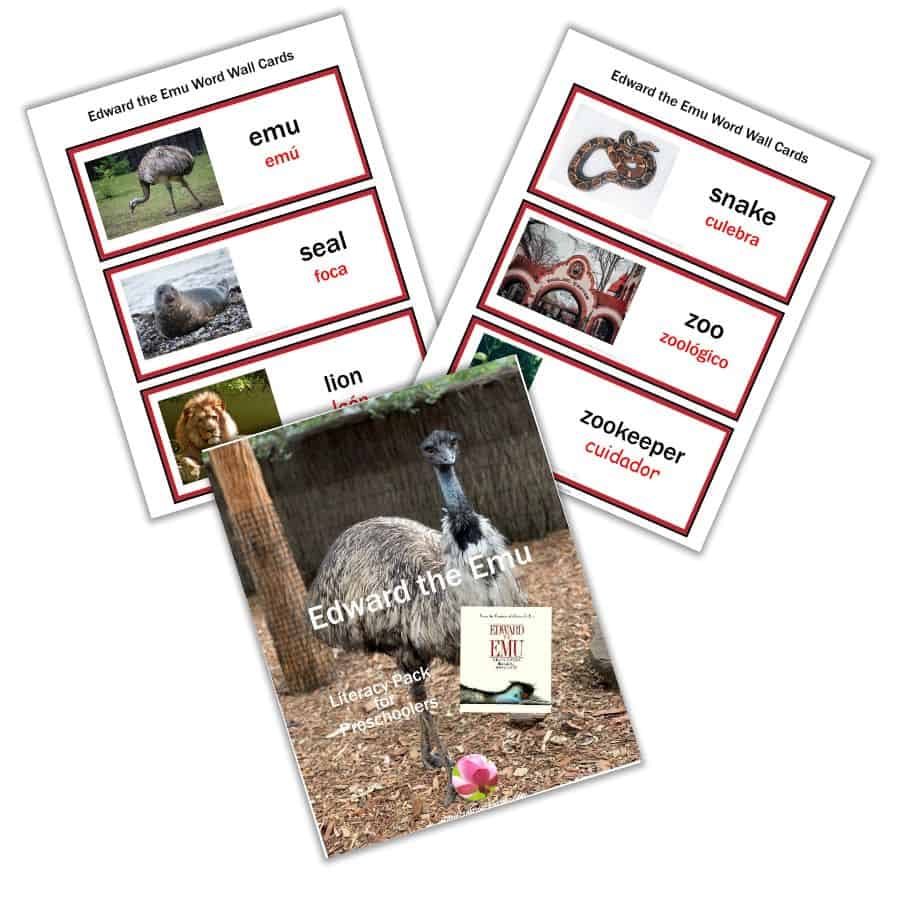
Identifying Letters
Identifying letters is crucial for preschoolers to develop the foundation for reading and writing skills. This knowledge also boosts the children’s desire to learn and their self-esteem.
After teaching or reviewing the letters Ee, Ss, and Ll, see if your preschoolers can identify them by finding them among others and marking them with a dot-to-dot marker, on the pages included in this Edward the Emu Literacy pack.
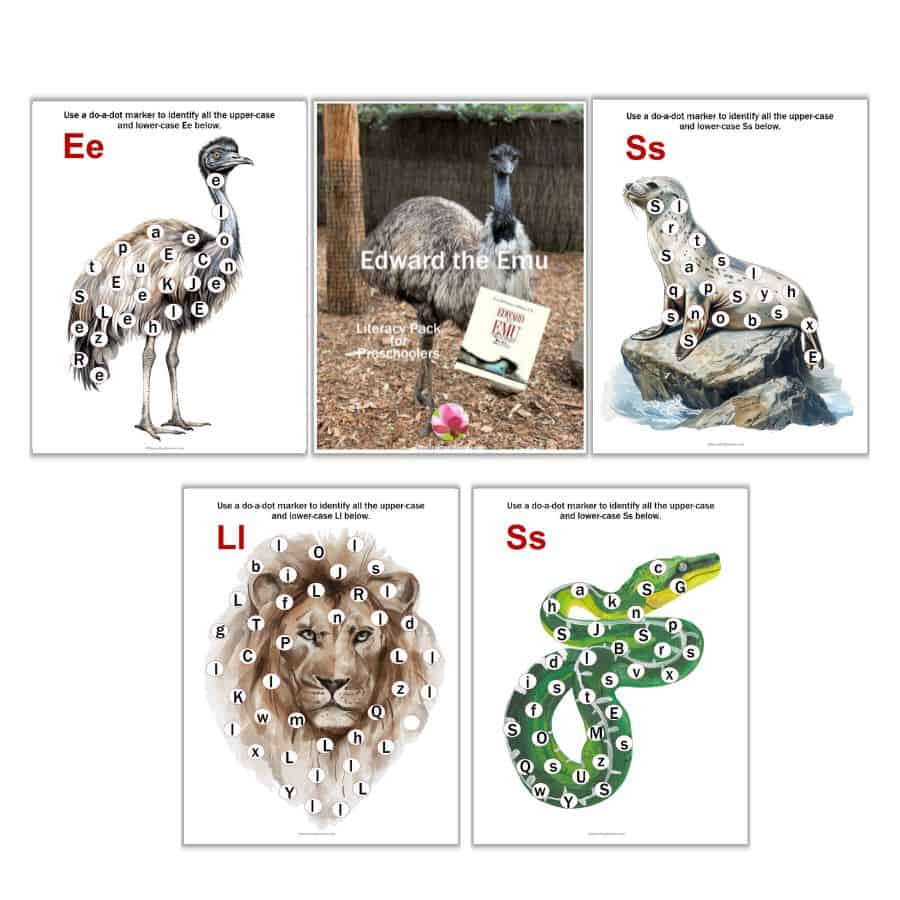
Tracing Letters and Fill
Another skill preschoolers need to acquire to build their foundation for literacy is learning the alphabetical order. This critical skill also develops crucial cognitive skills, including recognizing patterns, following a sequence, and improving memory and attention.
The trace and fill page included in this Edward the Emu literacy pack is designed to help preschoolers work on their fine motor skills by tracing the letters. They should also remember the next letter that follows according to the correct alphabetical order and trace that letter.

Tracing Letters and Words
Preschoolers also need to be able to trace letters, which is crucial to developing essential pre-writing skills, fine motor control, hand-eye coordination, and letter recognition.
This Edward the Emu literacy pack includes three tracing letters and word sheets for the animals in the story. Print each page using white cardstock, laminate it, or place it in a dry-erase pocket to make it last longer and use it multiple times. Invite the children to use a dry-erase marker to trace the letters and words.

Cut and Glue Spelling
Cutting and gluing activities can help preschoolers develop spelling and vocabulary skills in a fun way, as well as fine motor, hand-eye coordination, and concentration skills.
This activity, included in the Edward the Emu literacy pack, will help preschoolers strengthen their fine motor and literacy skills. The children need to cut out the tiles and glue them next to the animal picture to correctly spell the animal’s name.
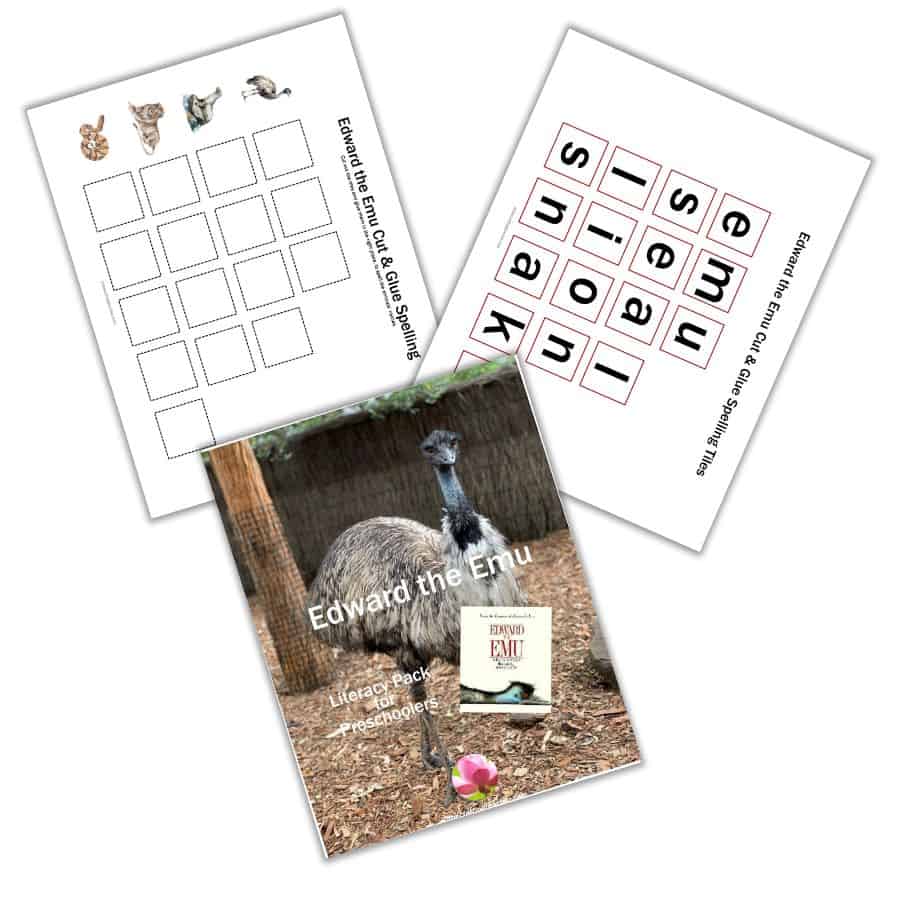
Facts for Concept Development Cards
Concept development helps preschoolers understand the world, making it more relevant and laying the foundation for future learning. It also promotes their critical thinking, problem-solving, and analytical skills.
This Edward the Emu literacy pack also includes a page with four cards, one for each animal, with some facts about each. You can use them to introduce some characteristics that make each animal unique.
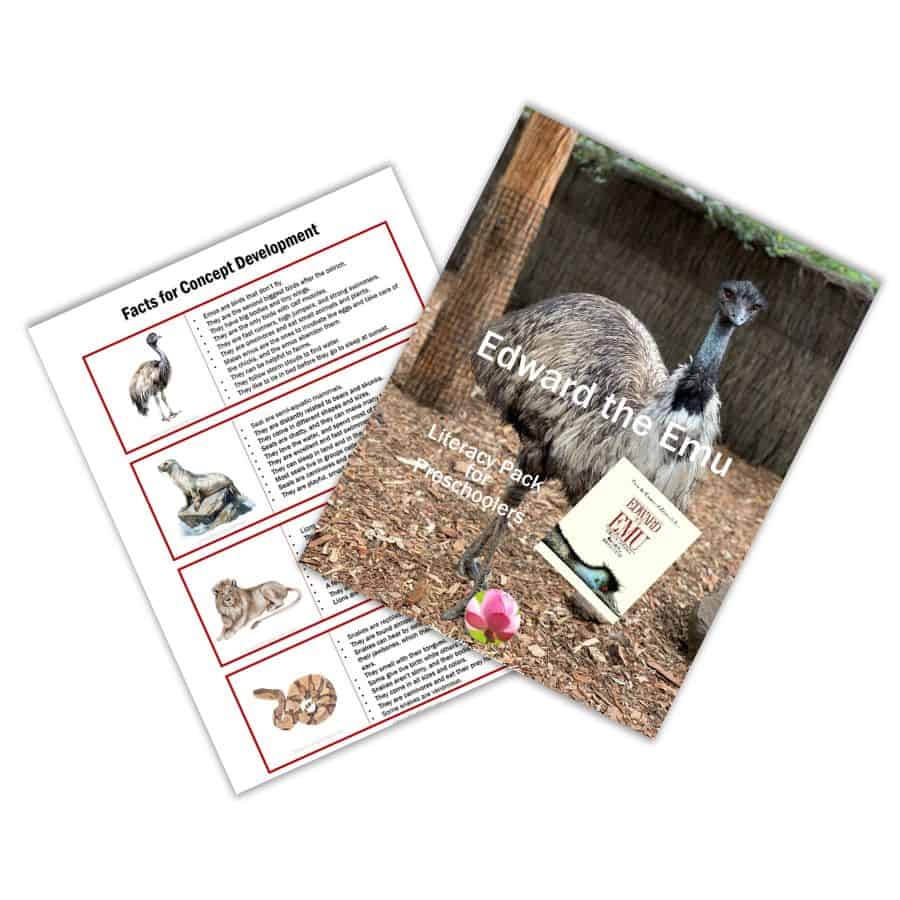
Rhyming Word Cards
Learning how some words rhyme helps preschoolers recognize sounds, syllables, and word patterns, which is also crucial for preschoolers’ literacy development and phonological awareness.
The last set included in the Edward the Emu literacy pack is six pages with six cards each, for 36 cards with the rhyming words that appear in the story. Print them using white cardstock, cut them out, and laminate them for durability.
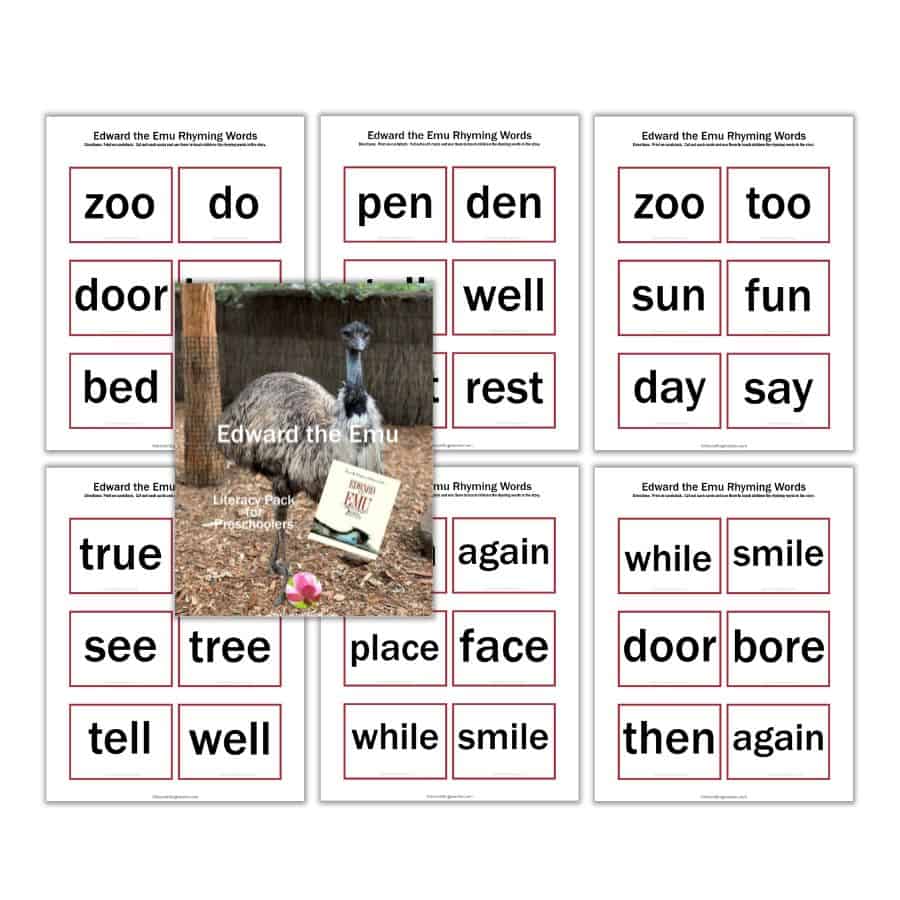
Adding Books to Your Centers
Add more books about emus, seals, lions, and snakes to your library and other centers to give children broad learning experiences and variety. These books could be an excellent source of knowledge. Below are some of my favorites. You can find these books at your local library, used book store, and on Amazon. The titles have my affiliate links that will take you directly to the correct Amazon page.
- Facts About the Emu by Lisa Strattin is an educational picture book packed with facts about the emu, full-color photographs, and carefully chosen words to teach children about the iconic Australian animal.
- Emu Number Seven by Dawn Rose is a cute counting book about making friends.
- Everything You Should Know About Emus by Anne Richards will teach children facts about emus, such as their color, the shape of their feathers, and the length of their lives on this planet.
- Seals! by Hope Aicher is an exciting nonfiction book that features stunning full-color photos and captivating facts about these incredible marine mammals. It also reveals seals’ unique adaptations, behaviors, and habitats worldwide.
- See What Seal Can Do by Christine Butterworth follows a gray seal on a journey from sand to sea in an engaging, richly illustrated story. The book merges a lyrical narrative with fascinating facts and inspiring illustrations.
- Andre the Famous Harbor Seal by Fran Hodgkins tells the story about the special connection that Harry Goodridge from Rockport, Maine, has with a harbor seal pup named Andre. The two became inseparable, though the seal could come and go as he pleased.
- All Things Lions for Kids by Animal Reads is a colorful book filled with amazing real-life images that combines fun with education to help you learn about lions.
- Lions by Laura Marsh uses beautiful, engaging photos to teach kids about these majestic big cats.
- Library Lion by Michelle Knudsen is a story about a lion that comes to the library one day and makes a comfy backrest for the children during story hour. But when something terrible happens, the lion quickly comes to the rescue in the only way he knows how.
- All Things About Snakes by Animals Reads is a colorful book filled with amazing real-life images that combines fun with education to help you learn about snakes.
- Snakes for Kids: A Junior Scientist’s Guide to Venom, Scales, and Life in the Wild by Michael G. Starkey is filled with fascinating facts and wild photographs that will take you close up to serpents, their habitats, life cycles, and their relationships with other animals create balance in the food web and help keep ecosystems healthy.
- Oh No! There’s a Snake in the Lake by Adam Ellison is an engaging and educational story that encourages bravery, curiosity, and a love of nature. It uses fun rhyming verses and colorful illustrations to tell the heartwarming adventure of a little girl who learns to face her worries and discovers the wonders of lake life.
Pin It For Later
If you are in a rush and don’t have time to read the post and download the printable but want to save it for later, pin it to one of your Pinterest boards.
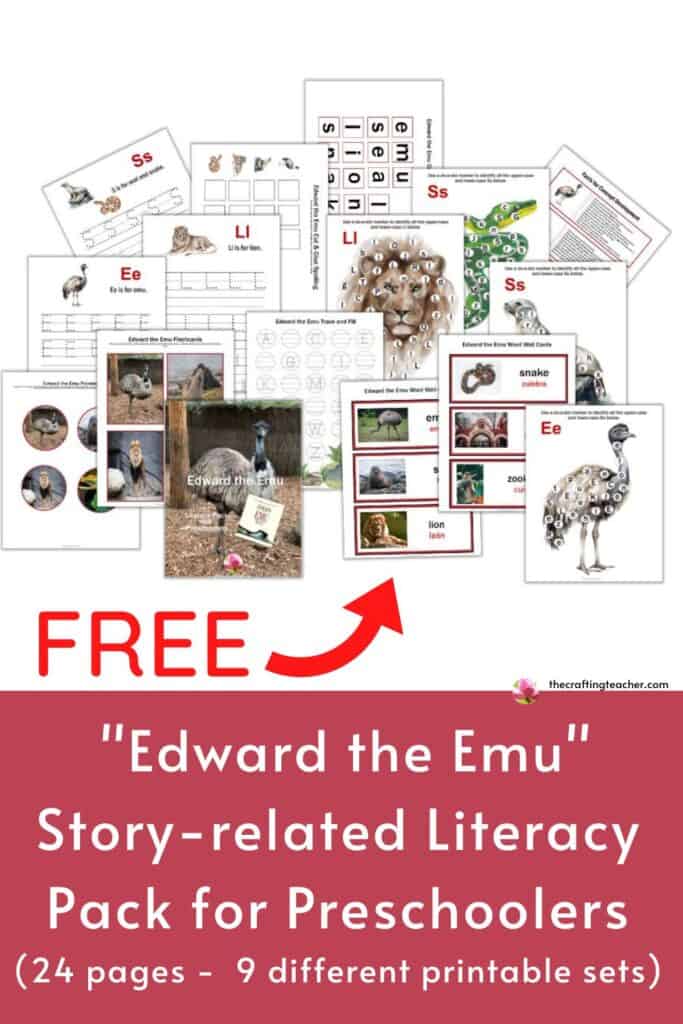
Remember to download your FREE Edward the Emu Literacy Pack. Just click the button below and type your information to get started immediately.
Be happy, safe, and creative. I wish you well.
Love,

P.D. Please let me know if you like these ideas, if they worked for you, or if you want to see something else. My goal is to help you in any way I can.

